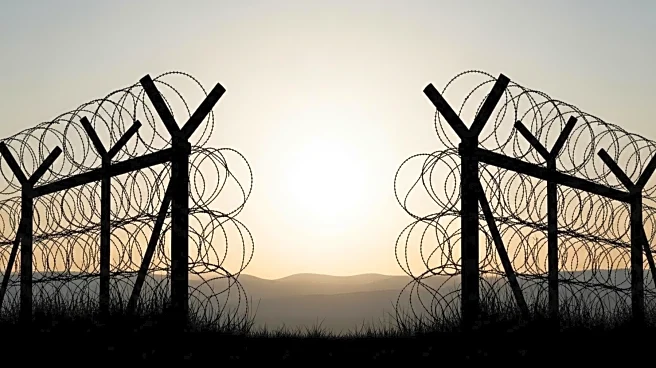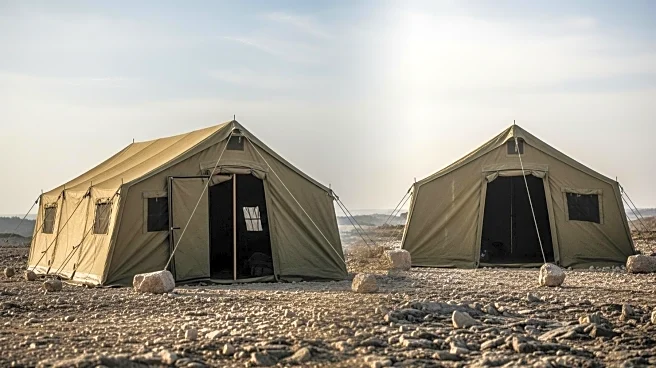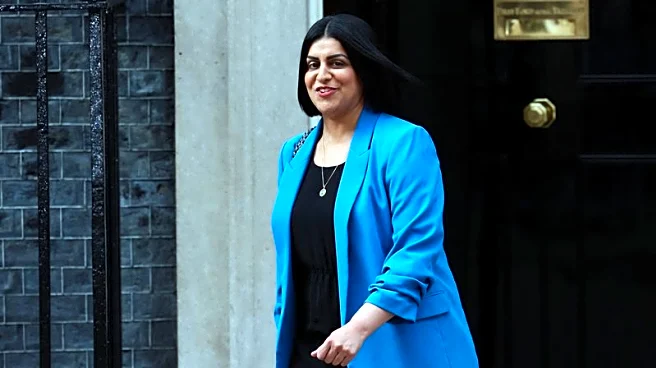What's Happening?
The Home Office is considering expanding the use of military sites to house asylum seekers, as part of a broader government effort to manage the increasing number of migrants crossing the English Channel. This initiative follows reports of over 1,000 people crossing the Channel in small boats on a single day, marking a significant challenge for the newly appointed Home Secretary, Shabana Mahmood. Currently, over 32,000 asylum seekers are housed in hotels, which the government aims to reduce by utilizing former military sites such as MDP Wethersfield in Essex and Napier Barracks in Kent. The Defence Secretary, John Healey, confirmed that military planners are collaborating with the Home Office to explore additional military and non-military sites for temporary accommodation.
Why It's Important?
The decision to use military sites for housing asylum seekers is significant as it reflects the government's attempt to address the logistical and financial challenges posed by the current reliance on hotels. This move could potentially reduce costs associated with hotel accommodations, which have been a focal point for anti-migrant protests. The initiative also underscores the urgency of finding sustainable solutions to accommodate the growing number of asylum seekers, which has reached over 30,000 crossings this year. The shift to military sites may alleviate pressure on local communities and provide a more structured environment for managing asylum applications.
What's Next?
The Home Office is expected to announce new proposals for housing asylum seekers on military land within weeks. This development may prompt reactions from various stakeholders, including local governments and civil society groups concerned about the impact on communities near these sites. The government will need to address logistical challenges and ensure that the facilities meet the needs of asylum seekers while maintaining security and operational efficiency. Further discussions and planning are likely as the government seeks to balance humanitarian obligations with public concerns.













